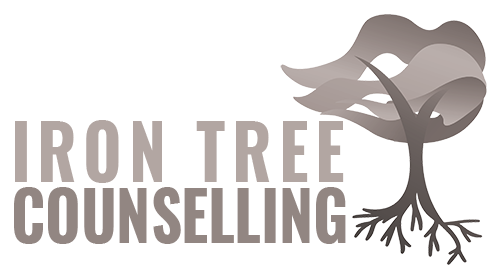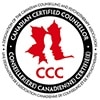First Time Counselling?
The First Step is the Hardest
So you’ve been told by your partner, family, and/or friends that you should look into counselling to get some support for yourself. Or maybe you have been thinking about starting counselling for some time. Regardless of the reason, you have finally decided to take the plunge into the seemingly abstract, open-ended, potentially nerve-wracking experience of talking to a counsellor. Welcome!
Counselling is different for everyone. I am a counsellor and a client – I seek my own regular personal counselling. As a client I have experienced the feelings of anxiety and uncertainty when preparing for seeing my counsellor. It is hard to know what will come up, how it will be responded to, and what I want from the session. The ironic thing is that by expressing those concerns to my counsellor, I was validated and supported to feel safe – thereafter is when the real personal awareness and exploration began.
As a counsellor, although I believe there is no right or wrong way to show up for a session, I have noticed with some individuals that sometimes it helps to have some tools that you can use from the beginning of counselling to initiate the development of your own personal knowledge. Counselling is really a place to gain self-awareness, insight, and hopefully compassion for your own experiences. Any knowledge/awareness/helpful practices you come equipped with only help to reinforce the overall aid provided through counselling.
Therefore, please see the resources below, with a brief explanation of what it is and how it can be helpful, so that you may begin to reflect on your own experiences, without judgement, outside of the counselling session. My hope is that with more tools in your belt you will feel more confident and prepared to engage in your mental health and wellbeing journey.
Strategies for Starting Out
Feeling Wheel
Sometimes called an emotion wheel, or perhaps a pie of feelings, is essentially a big pie chart with many different feeling/emotion words on it. The purpose of using this is to establish an increased understanding (emotional intelligence) of what you may be emotionally experiencing in any given moment.
By taking a moment to explore further, rather than naming your experience as “anxiety” or “depression,” for instance, you may find that your feelings are more layered and complex than that. This tool can be very helpful when having conflictual or difficult conversations with others. It will support you to communicate more effectively and specifically. The expression, name it to tame it, describes the intensity-reducing effect on emotional experiences that happens when people can more specifically name what they are truly feeling (Lieberman, Eisenberger, Crockett, Tom, Pfeifer & Baldwin, 2007).
The link (header, Feeling Wheel) will bring you to a feeling wheel that has three layers of feelings – they become more refined and situationally/relationally contextualized as you move to the outer borders of the wheel.
Thinking Traps
Sometimes referred to as ‘cognitive distortions’ or ‘unhelpful ways of thinking.’ They are concepts derived from Cognitive Behavioural Therapy (CBT). They are irrational thought processes/patterns that have developed over the lifespan.
They are typically learned through relationships with others and/or by modelling, particularly in the developmental years. Often times, until someone else, or yourself, brings these traps to your awareness, they often continue impacting your mental health unconsciously and generally result in exacerbating emotional dynamics.
Click the link (Thinking Traps) above to see the most common traps. One last note about this – it can be jarring to learn of the various ways we think, act, communicate with ourselves and others. When using this information reflect upon it’s resonance with you from a non-judgemental, curious, present, and compassionate place. Perhaps consider exploring these with a trusted and caring friend (or counsellor) to support you in developing this self-awareness.
Body Awareness
There is a lot of information and research that connects the experience of anxiety, depression, stress, and all emotions, to the body (Van der Kolk, 2014). The body – experienced through physical sensations, a ‘gut feeling’, tension, relaxation, and more – is often the first part of the person to react to stressful/difficult situations.
Thus, by learning how your body is impacted by your varying emotional/stress-related experiences, this can offer a quick avenue for effective distress regulation. The earlier you are aware of your distress/discomfort the more effective any grounding/self-regulation/relaxation strategy will be.
The link (header- Body Awareness) leads you to a PDF of a diagram of a body with some other prompts to explore your physical experience of anxiety (the PDF can be used for any emotional experience). This can be used when you are experiencing discomfort, or alternatively, after a distressing experience where you can record how your body was impacted on the PDF.
Grounding/ Self-regulation
Last, but definitely not least, is a PDF with a few different types of tools/strategies that you can use in the moment when you are feeling overwhelmed, anxious, out of control, zoned out, etc.
These strategies vary from focusing on the body, the mind, or the external environment. The purpose is to use the strategies to develop a sense of control over your own experiences – so that you can begin to recognize that you have control over your feelings/anxiety and not the other way around.
I would recommend experimenting with a few and then picking one or two as your go-to strategy when you are in need of grounding. A tip: it can be helpful to practice these exercises when you are feeling good, so that when you actually need them, you have already developed a habit of using them and therefore you will more likely be able to remember to use the strategy when you most need it.
These are not cure all strategies, however, once you gain a sense of control over your emotional states, you can then begin to explore deeper into your life struggles in a safer, more regulated manner.
Note: The above resources for counselling are not a replacement for therapy or personal work on their own. If wanting to explore your own traumas, struggles, and tribulations, it is important to consider seeking out a mental health professional. However, these can be great tools and starting points to begin developing your own self awareness, emotional intelligence, and experience of emotional safety. For more strategies for decreasing stress, click here.
References:
Lieberman MD, Eisenberger NI, Crockett MJ, Tom SM, Pfeifer JH, Way BM. Putting feelings into words: affect labeling disrupts amygdala activity in response to affective stimuli. Psychol Sci. 2007 May;18(5):421-8. doi: 10.1111/j.1467-9280.2007.01916.x. PMID: 17576282.
Van der Kolk, B. A. (2014). The body keeps the score: Brain, mind, and body in the healing of trauma. Viking.




